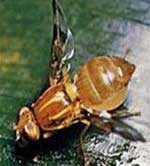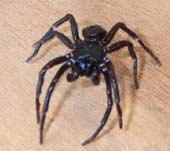A new study published in Current Biology reveals that giant hornets can be lured into traps using sex pheromones for extermination.
Scientifically known as Vespa mandarinia, the giant hornet is an invasive species in North America, originating from Asia. This insect is notorious for its nickname “murder hornet” due to its venom and aggressive behavior.

Giant hornets can be lured into sex traps – (Photo: AP)
Giant hornets can grow up to 5.5 cm, making them the largest and most dangerous hornet species in the world. According to the study, their venom attacks the nervous system and poses a life-threatening risk to victims if not treated promptly after being stung.
This giant hornet species even preys on smaller hornets, earning them the title of “genocidal hornets.”
While Asian hornets have adapted to protect themselves from predatory hornets, North American hornets are being decimated by them. Giant hornets have devastated hornet populations in the United States.
It is estimated that in the U.S., giant hornets cause over $100 million in damage annually to crop yields due to pollination, according to CNN.
Lead researcher James Nieh, a professor and vice chair of the biology department at the University of California, San Diego, stated that his team created a series of traps using sex pheromones to attract male hornets.
According to Nieh, pheromones are chemical substances produced to convey sexual information within a species.
Each trap is equipped with a fake female hornet coated with sex pheromones to attract males. Male hornets are drawn to the sex pheromones of the female hornet.
Nieh further explains: “Male hornets are attracted and fly around the traps, but none will land unless there is something there that looks like a female hornet.”
After placing traps near hornet habitats in Yunnan Province (China), researchers found that the pheromone composition equivalent to the queen’s sex pheromone had the strongest attraction for male hornets.
This artificial sex pheromone is made from hexanoic acid, octanoic acid, and decanoic acid, the study indicates.
The pheromone traps catch hornets 16 times more effectively than traps without pheromones.
Nieh also noted that after setting the traps outdoors for a single day, scientists were able to capture thousands of hornets.
However, Allen Gibbs, a professor in the life sciences department at the University of Nevada, Las Vegas, remarked: While this is an effective method for capturing a large number of giant hornets in a short time, it is not an ideal system.
According to Gibbs, this method only traps males, while females remain free to fly away and start new colonies.
Additionally, hornets only mate for a few months in the fall, so trapping can only be conducted during that time.





















































